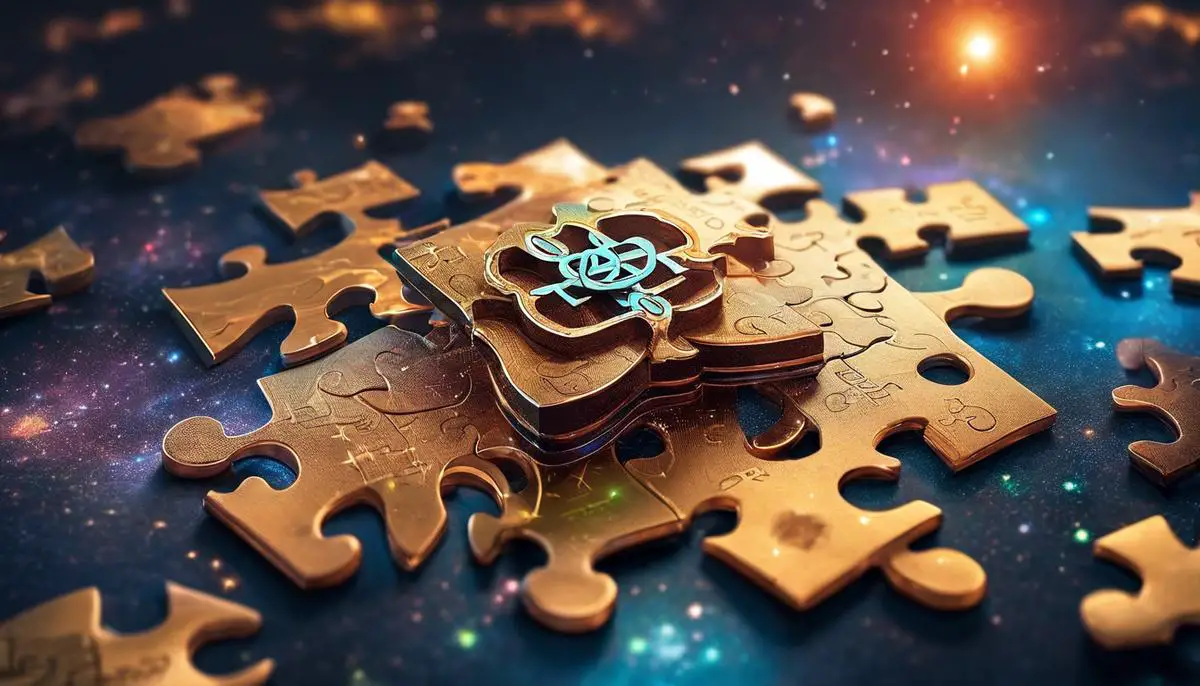Delving into the labyrinth of human dreams opens a riveting dialogue about our innermost thoughts, sentiments and the psychological mechanisms that drive them. The occurrence of dreaming about the same person repeatedly presents a fascinating crossroads between the realms of psychology, memory, emotional bonding, and personal development. As we navigate through the captivating theories of renowned psychologists like Freud and Jung, revisit the effect of our poignant past experiences and episodic memories on dreams, and explore the profound link between emotional investment and recurrent dreams, we find ourselves at a unique vantage point to understand the human psyche on a much deeper level.
The Psychology of Dreaming
Unraveling truths within the cerebral cortex: Illuminating the psychological theories of dreams
Human experience finds itself steeped in a sense of surrealism when taking time to consciously reflect upon the enigmatic nature of dreams. With slight regard for the principles of realism, physics, or even time, dreams paint their stories onto the canvas of our minds with captivating audacity. The events, characters, and narratives that inhabit our dreams have long been a subject of intrigue, igniting curiosities and spurring theories within the field of psychology. Several psychological theories attempt to demystify the phenomena of dreaming; three are germane to this discourse: Freudian theory, Activation Synthesis theory, and Threat Simulation Theory.
The Freudian theory, first promulgated in Sigmund Freud’s seminal work, “The Interpretation of Dreams” in 1899, postulates that dreams are the expression of repressed wishes, usually of sexual nature. Freud astutely divided the dream into two parts: the manifest content or the images and storylines that we remember, and the latent content or the unconscious wishes and thoughts being symbolically acted out. However, instances where dreams hold no discernible connection with repressed desires challenge this theory.
In contrast, the Activation Synthesis theory, posited by Harvard University’s Allan Hobson and Robert McCarley in 1977, argues that dreams are none other than the brain’s interpretation of random and chaotic neural activity initiated in the brainstem during sleep. Rooted in biology rather than psychoanalysis, this theory proposes that the brain, in its attempt to find meaning from these random signals, forms dreams. This theory’s strengths lie in its neurobiological grounding, but it fails to explain why dreams often hold significant emotional implications and structured narratives.
Taking a more evolutionary perspective, the Threat Simulation Theory, proposed by Antti Revonsuo, purports that dreams served an adaptive function for our ancestors, providing a virtual and safe environment to practice responses to threatening situations. Dreaming thus served as an ancient survival skill honing mechanism. However, the application of this theory to modern society, where physical threats are relatively less common, presents a conundrum.
Curiously, these theories are not mutually exclusive. It is conceivable that different aspects of dream phenomena could be explained by different theories, adding multiple dimensions to our understanding of dreams. After all, the human mind is a complex and abstract entity, so why shouldn’t multiple theories co-exist to explain its deep-seated mysteries?
As is true of scientific exploration, we find ourselves at the future’s threshold with more questions than answers. But such is the beauty of relentless pursuit of knowledge. The unending fascination with dreaming stands testament to the larger human quest for understanding the self, providing an exciting arena for continued research. So, as one ponders upon the complexity of dreams, it needs to be understood that their interpretation will not disclose a rigid rulebook, rather a fascinating mosaic of insights into our minds and human nature itself.

The Role of Memory and Past Experiences
The Influence of Memory and Experience on the Content of Our Dreams: Focusing on Recurring Personages
Delving deeper into the realm of dreams presents a labyrinth of enigmatic dimensions, among which resides the intriguing topic of recurrent dreams, particularly those featuring the same individual. Theories abound in this vastly uncharted territory, encompassing a spectrum from neurophysiological manifestations to profound psychological insights. Following on from our exploration of the dominant theories of dreams, we now turn our attention to the influence of memory and past experiences on the content of our dreams and specifically, why we continually dream about the same person.
One cannot initiate a discourse on this matter without emphasizing the substantial role that memories play in our dreams. A reservoir of past experiences, memories are a fountainhead of the symbols and narratives that comprise our dreams. Cognitive research reflects that the presence of someone from the past, whether a past lover or a departed family member, in our dreams represents a fine interplay between memory consolidation and the emotional significance attached to that person.
Periods of rapid-eye movement (REM) sleep, the phase when most dreaming occurs, facilitates memory consolidation. Complex neural connections are reinforced, promoting the integration of new information with pre-existing knowledge structures. Dream content is, therefore, an elaborate montage composed from the remnants of daily experiences intermingled with deeply-ingrained memories. This provides a plausible explanation for why someone we ardently think about during our waking hours can hold a prominent position in our dreams. But what can explain the recurrence of a specific person, especially someone not prominent in our daily thoughts?
Continuing our exploration, it becomes evident that it’s not just an empirically objective memory that influences the frequency of a person appearing in dreams; emotional salience and attachment styles play a pivotal role too. Sentiments and emotion-laden memories, whether positive or negative, have shown to exert considerable influence on dream frequency and content. Individuals who hold profound emotional significance, irrespective of whether they continue to be a part of our lives, are more likely to appear repeatedly due to their emotional resonance.
Attachment theory also provides an interesting perspective on recurrent dream figures. According to this theoretical framework, dreams about specific individuals often arise from internal attachment models formed on the basis of past interpersonal relationships. Therefore, if a person in the waking life serves or served as an attachment figure, they are more likely to manifest themselves frequently in dreams.
Furthermore, unresolved conflicts or unfulfilled desires often make their way into our dreams. Dreaming about the same person repeatedly may represent an attempt to process unresolved feelings, establish closure, or fulfill a latent desire. Dreams can thus serve as a platform for the unconscious mind to express unresolved issues.
In conclusion, memories, past experiences, emotions, attachment models, and unresolved issues collectively shape the individuals who frequently appear in our dreams. Undoubtedly, this topic offers fertile ground for multidisciplinary research in neuropsychology, cognitive science, and psychodynamic theory among others. As scientific tools become increasingly sophisticated, these glimpses into the world of dreams will be brought into crisper focus, eventually unveiling the profound depths of the human mind.
Cover image:

Emotional Bonding and Attachment
Building upon the comprehensively elucidated foundation, one embarks on the intriguing nexus between emotional bonding, attachments, and dreams about the same individual.
A meticulous examination of the spectrum of human emotions uncovers a direct influence on our dreams’ form and content.
From joy, love, anger, to fear, these sentiments play a starring role in the theatre of the sleeping mind.
Attachment theory, pioneered by British psychiatrist John Bowlby, provides valuable insights into the existence of frequently recurring characters in dreams.
Human beings naturally form emotional bonds, called attachments, with the people closest to them.
Interestingly, these bonds often jerk the trajectory of our dreams.
That is to say, people with whom we share deep emotional bonds are more likely to feature prominently in our dreams.
Consequently, a parent, spouse, friend, or significant other – having a prominent bearing on our emotional life – recurrently appears in dreams.
Existing research corroborates this claim, showing individuals are more apt to dream about people they share emotional bonds with than mere acquaintances or strangers.
Moreover, research embracing attachment theory has illuminated that the nature of our relationship with these individuals can also steer the thematic narrative of our dreams.
For instance, a conflict-ridden relationship could give rise to dreams that echo those conflicts, anxieties, and concerns, rather than portraying the serene aspects of the relationship.
Transitioning from Bowlby’s attachment theory, the exploration ventures into the realm of unresolved conflicts and unfulfilled desires.
Often these unsatisfied elements tend to linger in the subconscious, surfacing during REM sleep and often being portrayed through dreams.
This reminiscence aligns with Carl Jung’s contention that dreams wrestle with unsolved problems of waking life.
Delving into the dynamic between dream frequency and emotional salience fleshes out another layer of understanding.
Emotional salience refers to the significance that an individual ascribes to a particular person or event in their life.
It is not surprising, then, that individuals or events imbued with high emotional salience tend to pervade our dreams with greater frequency.
Unfurling this puzzle through a multidisciplinary approach solidifies the potential for an enriched understanding of dreams and, in effect, human nature.
Neurologists, psychologists, and sociologists alike can bring their expertise to bear, unraveling layers of the subconscious mind.
Emerging technologies and research methodologies also present unprecedented opportunities to decode how emotional bonds and attachments shape our dreams.
In conclusion, dreams—as a mirror reflecting our deepest emotions, conflicts, and desires—can provide profound insights into our relationships and our sense of self.
Indeed, in understanding our dreams, we inch closer to comprehending the complexity of the human mind and its emotional landscape.
The quest to understand dreams and their relation to emotional bonds and attachments aligns with the broader scientific endeavor to illuminate the enigmatic domain of human consciousness.

Repetition as a Path to Resolution
In navigating the labyrinth of the human mind via dreams, compelling yet unanswered questions arise. Among these quandaries, the phenomenon of repetitive dreaming about a single person has puzzled both dreamers and scientists. Recent research suggests that such dreams, recurring and spinning their narrative around an individual or figure, might not just be random neural firings, but a process to attain resolution.
Historically, theorists such as Mary Ainsworth have espoused attachment theory, adding depth and perspective to dream analysis. Ainsworth proposes that recurring figures in dreams, particularly those we have strong emotional bonds with, are likely representations of our external relationships. Our internal cognitive processing is thereby mirrored within the dream environment, where attachment figures become recurring characters, influencing narratives and shaping dream-themes.
Frequent depictions of individuals, particularly those with whom we have potent emotional dynamics in waking life, might represent the processing of ‘attachment anxiety’ or ‘avoidance,’ mirroring individual interaction patterns established in the waking world. Much like an elusive nocturnal director, our dream-state minds create narratives, presenting elements of emotional bonding, unresolved conflict, and repressed desires. This repetitive presentation can serve as an attempt to reach resolution.
To visualize this, consider the palimpsest nature of dreams: layers and layers of emotion, conflict, and feelings associated with significant individuals being presented repetitively until a resolution emerges. Each subsequent dream may feel similar, but in essence, adds more layers, gradually revealing the previously obscured truths about one’s emotional state.
Moreover, growing research parallels curious concordances between dream character frequency and emotional salience. Figures that elicit strong emotional responses, whether positive or negative, appear more often in our dream-NESTs (Network of Emotionally Significant Thoughts). Thus, viewers might be drawn into repetitive dreams with specific individuals to aid emotional processing or strive for interpersonal resolution.
Furthermore, where science meets the arts, an interdisciplinary stance emerges. Incorporating understanding from cognitive sciences, psychology, and narrative theory can foster multifaceted insights. The complexity of dreams calls for such a diversified approach wherein different disciplines can contribute towards building a comprehensive understanding of this alluring cognitive phenomenon.
Finally, the emergence of new technologies and methodologies in dream research holds great promise. As we continue to untangle the enigma that is dreams, it seems plausible that recurring dreams about individuals may serve as an avenue for reaching emotional resolution. Further investigatory avenues, employing these cutting-edge technologies, can provide a broader understanding of how meticulous our subconscious truly is in reflecting the emotional webs weaved within us.
Through dreams, we catch glimpses into the mind’s mysterious depths, iridescences of emotions, conflicts, and desires ripple across the subconscious canvas. Repetitive dreaming about a person might indeed be a tenacious bid by the subconscious to reconcile unresolved emotions and strive towards resolution. As we delve deeper into this fascinating nocturnal universe, it contributes to the larger comprehension of the complex human mind, further establishing dreams as potent containers of the whispers from our deepest selves.

Interpretation and Meaning

In our exploration, we have noted that recurring dreams about the same individual are far from being mere fantasy. They act as mirrors reflecting our past experiences, emotional bonds, and unresolved issues. The importance of interpreting these dreams uncovers a path to personal development and self-awareness, offering profound insights into our psychological state. Unraveling these layers, similar to peeling an onion, gives us a glimpse into our subconscious mind, bringing to light grief, joy, fear, longing or desire hidden beneath the surface. Navigating this unique space further enhances our understanding and points us towards individual growth – A testament to the remarkable way our minds use dreams as a medium for self-communication and progress.
